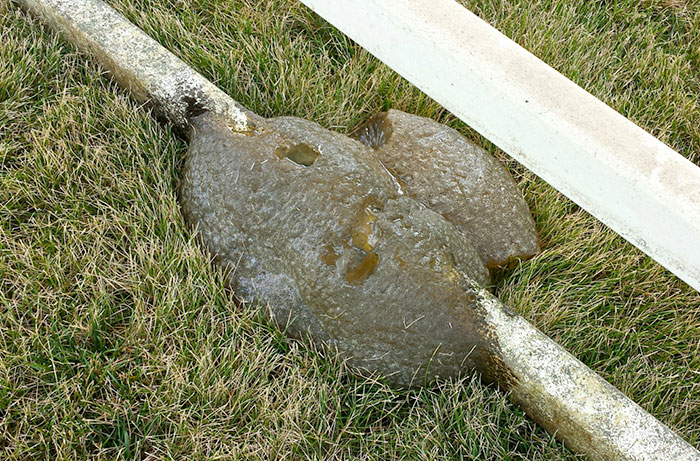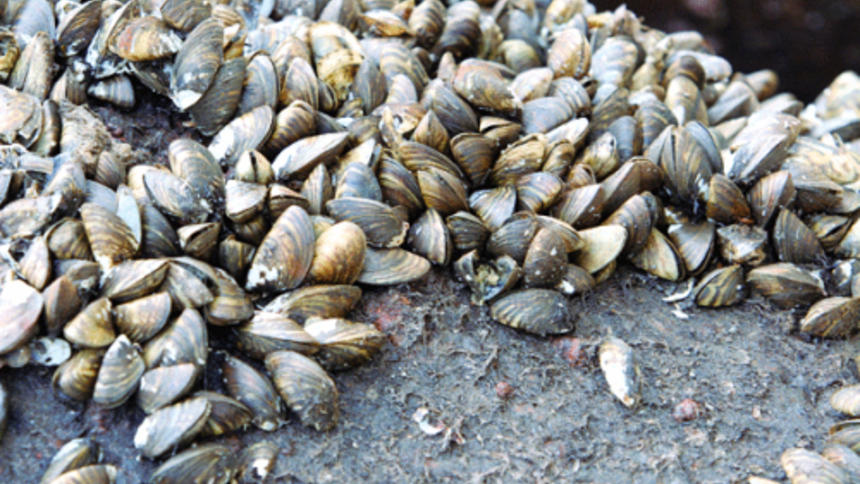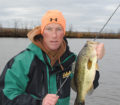By Steve Weisman
Outdoor Editor
“Keep our Lakes Alive.” That’s a pretty powerful statement, isn’t it? I think it’s what those of us living in the Iowa Great Lakes area want. However, when you consider that the watershed for the Iowa Great Lakes (acres of lakes and land) adds up to 85,933 acres, achieving this goal becomes a pretty daunting task. How can we as residents even begin to address an 85,933-acre watershed?
That’s where the Dickinson County Clean Water Alliance (CWA) comes in. Formed in 1990 through the efforts of the Dickinson Soil and Water Conservation District and the Iowa Natural Heritage Foundation to be an informational sharing group, the CWA (www.cleanwateralliance.net) has evolved into an organization that coordinates the clean water efforts in Dickinson County. It has grown to the level of having 81 partners (government agencies, non-profit organizations, private businesses and individuals) and, as a result, works to coordinate water quality efforts.
John Wills, coordinator, says, “Working on water quality for all of the Iowa Great Lakes region takes a joint effort. No one group is large enough to handle something this large. That’s why there are so many partners.”
The CWA has five major objectives.
- The first is to coordinate water quality efforts with all of its partners.
- The second is to communicate water quality activities to the general public, including updates and issues facing the lakes.
- The third is to educate the general public of water quality issues, current projects and future projects.
- The fourth is to facilitate the uniting of the CWA and its partners to solve common concerns by defining similar goals and guiding members to cooperative projects that positively impact the water quality.
- The fifth is to lead the effort in seeking out funds for projects and to help assist the Water Quality Commission allocate money for worthy projects.
“Everybody has a stake in this and wants clean water,” says Wills. “It’s how we get there to achieve this goal. We always need to remember that the Iowa Great Lakes region is a series/chain of lakes. As a result, what happens in one lake’s watershed impacts all of the lakes.”
The vehicle to achieve this goal comes in the form of the Iowa Great Lakes Watershed Management Plan (WMP) that was originally written in 2010 and revised in 2013. “Normally, these revisions are done every five years. However, our former plan was more of a shotgun approach, so even though projects were being completed, they were in isolation. The 2013 revision uses more of a focused and deliberate plan that helps to better impact the entire system.”
One way in which this issue has been addressed is by breaking the watershed implementation plans into Resource Management Areas (RMA).
A total of 13 RMA projects are included ranging from north of Big Spirit Lake into Minnesota, along each side of each lake all the way to Lower Gar. To help with the organization of the plan, projects have been divided into short term, intermediate term and long term goals.
An RMA project completed in 2013 was the Okoboji View wetlands project. The $2.6 million project transformed just over 350 acres of cropland back into natural prairie and wetlands just west of Okoboji View Golf Course. The project was a joint effort by local, state and federal environmental wildlife agencies and the Iowa Natural Heritage Foundation. It has become a win-win project for the golf course, wildlife and the waters of West Okoboji. It has been estimated that the total reduction in phosphorous from reaching the lake is 300 pounds per year!
Current project
A current RMA is the Hottes and Marble Lake project. The objective is to restore and maintain these lakes as clear water systems. Since the Hottes/Marble Lake Complex and its watershed amounts to almost 19 percent of the watershed into Big Spirit Lake, this project is crucial in helping increase the clean water efforts. Conservation programs, easements and public acquisitions will help protect these areas and greatly decrease the sediment that ends up in Big Spirit. In addition, structures will be in place on Hottes/Marble to allow for periodic drawdowns to help control fisheries populations, promote the growth of vegetation and help clean the water. Fish barriers will control the movement of fish in and out of the system.
Becoming involved as individuals
Pretty exciting stuff, isn’t it! We must remember, however, that even with these practices in place, it is just the beginning. We won’t see an overnight change in the Iowa Great Lakes. It took decades to create the issues we have today, and it will take time to reverse what has happened.
The key, though, is DOING…not just talking about it! One of the things we can do is to volunteer to help or to join one of the many non-profit groups that partner with the CWA. By going to the CWA website and clicking on the link “Partners,” you can take a look at all of the partner groups. Some are general in nature, while others are site/lake specific. One that I have become a part of is the Okoboji Protective Association (www.okobojiprotectiveassociation.org). Since its founding in 1905, the OPA has worked to preserve and enhance the ecological health of not only West Lake Okoboji but of the entire Iowa Great Lakes watershed. OPA was actually a founding member of the CWA when it first began. Go to the OPA website to learn more out the organization and opportunities to be part of its conservation efforts.
The bottom line? Become involved in helping to keep our lakes alive!
















